What Are The Advantages Of Drying Food?
- Walid
- Aug 2
- 9 min read
Discover the Benefits of Food Drying
Food drying advantages are numerous, offering health-conscious individuals an opportunity to preserve and enjoy nutritious food year-round. This ancient preservation method helps retain essential vitamins and minerals while eliminating excess moisture that fosters spoilage. By drying foods, you extend their shelf life significantly, making it easier to stock up on seasonal produce and reduce food waste.
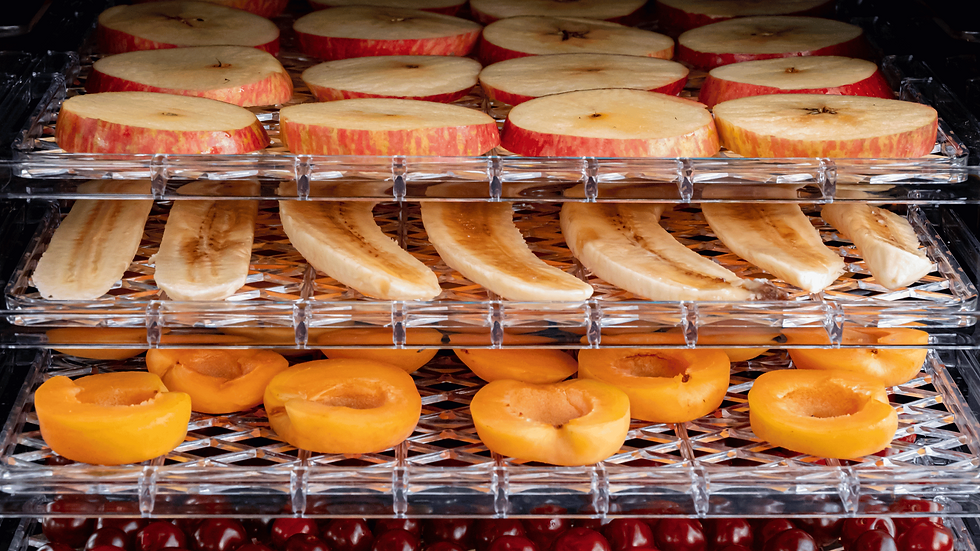
Enhanced Flavor
One of the most delightful food drying advantages is the intensified flavor profiles of dried foods. The drying process concentrates flavors, making fruits taste sweeter and vegetables more savory. This is especially true for herbs, which when dehydrated, can add a burst of aroma and taste to your dishes, elevating your culinary creations significantly.
Nutritional Value Preservation
Another key benefit is the preservation of nutritional value. Most vitamins, such as Vitamin A and C, remain intact during the drying process, allowing you to enjoy the benefits without compromising health. You'll find that dried fruits and vegetables are not only convenient but can also serve as nourishing snacks loaded with energy-boosting nutrients.
Easy Storage
Weight Reduction
Cost-Effective
With reduced weight and bulk, dried foods occupy less space, making them ideal for travel, camping, or simply for stocking your pantry efficiently.
Food Item | Drying Method | Storage Time |
Apples | Dehydrator | 1 year |
Tomatoes | Oven | 6 months |
Cost Savings
By taking advantage of bulk purchases or seasonal discounts, food drying can translate to financial savings in your grocery bill.
Preserves Seasonal Produce
Reduces Spoilage
Encourages Healthy Snacking
"Embrace the food drying advantages to enhance your culinary experience and promote a healthier lifestyle!"
Want to explore more? Head over to our homepage and see what we have to offer!
How Food Drying Enhances Shelf Life
Food drying advantages extend beyond simple preservation; it significantly increases the shelf life of various food items. By removing moisture, the risk of spoilage due to bacteria and mold is minimized. Whether it’s fruits, vegetables, or meats, food drying allows them to be stored for extended periods without refrigeration, offering a practical solution for long-term storage. This method not only retains nutrients when done correctly but also intensifies flavors, making dried foods a delightful addition to meals.
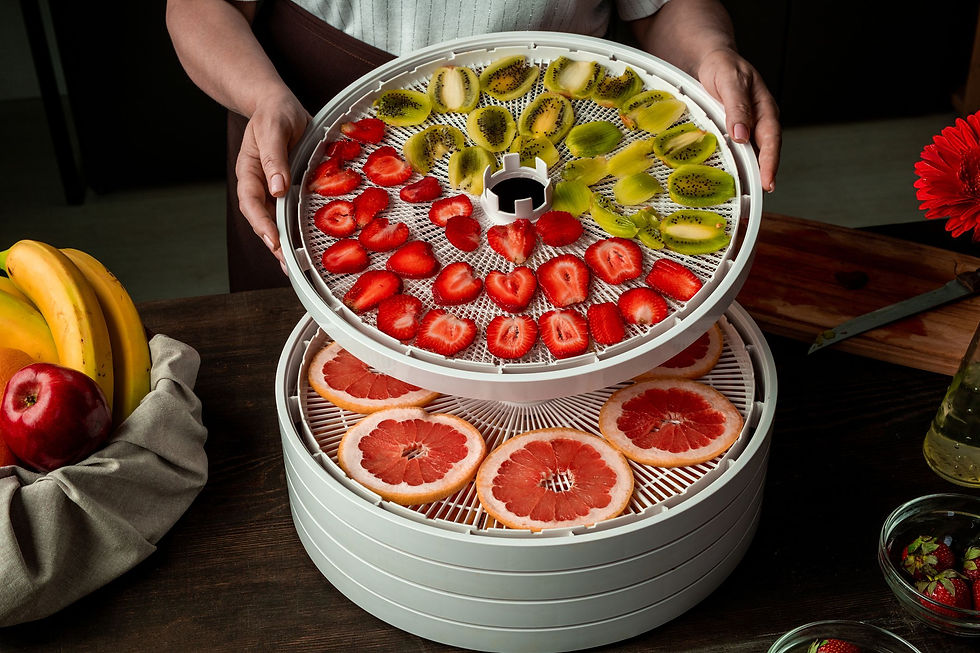
Health Benefits of Dried Foods
Another notable advantage of food drying is the retention of essential vitamins and minerals. Unlike freezing, which can diminish some nutrient levels, drying minimizes degradation. Additionally, dried foods often contain fewer preservatives and added sugars compared to their commercially packaged counterparts, making them a healthier choice. These benefits make them a great alternative snack that can easily fit into a balanced diet.
Convenience and Versatility
Dried foods are not only ideal for long-term storage, but they are also incredibly versatile. They can be used in a variety of recipes, from smoothies to soups. Their lightweight nature makes them ideal for hiking or camping. With the convenience of shelf-stable products, dried foods offer a quick and hassle-free option for busy lifestyles.
Extended shelf life
Nutrient retention
Less food waste
Easy to store
Flavor enhancement
The table below illustrates the difference in shelf life between various food preservation methods:
Food Item | Refrigerated | Dried |
Fruit | 1 week | 1 year |
Vegetables | 1 week | 1 year |
Meat | 1 week | 2 years |
Practical Tips for Drying Food
If you're looking to harness the food drying advantages, consider investing in a food dehydrator or using an oven. Start with fresh and ripe produce to achieve the best results. Make sure to cut foods into uniform sizes for even drying and store dried items in airtight containers to prevent moisture absorption.
Want to explore more? Head over to our homepage and see what we have to offer!
Choose high-quality, ripe produce
Slice evenly for uniform drying
Store in airtight containers
Label your dried foods with dates
The food drying process is a time-tested method that allows you to enjoy natural foods for longer while unlocking the extraordinary flavors within.
Top Nutritional Gains from Food Drying
Food drying advantages are numerous and include retaining essential vitamins and minerals while enhancing flavor. The drying process removes moisture, which helps preserve the food’s nutritional integrity longer than fresh produce. As the nutrients remain concentrated, dried foods often boast a more intense taste and serve as an efficient, nutrient-dense snack. This is especially beneficial for those seeking healthy choices without added preservatives and sugar.Check out our selection of dehydrated red bell peppers that are great in stews, soups, or as a quick meal accompaniment.
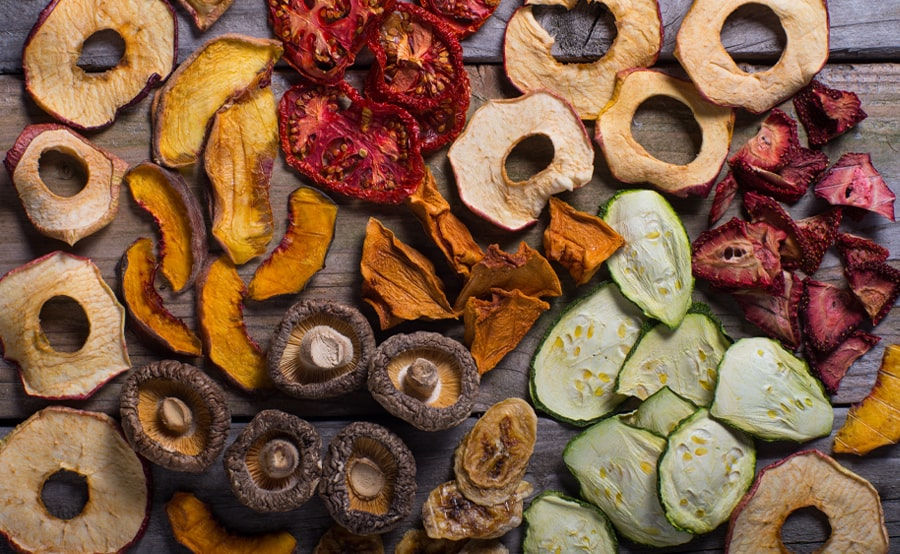
Enhanced Shelf Life
One of the primary food drying advantages is the significantly extended shelf life of dried fruits and vegetables. By removing moisture, bacteria and mold are discouraged from thriving, allowing you to store food for months or even years. This is particularly advantageous for people aiming to minimize waste and maintain a diverse diet throughout the year.
Convenient Nutrient Density
Dried foods are incredibly convenient, packing a wide array of nutrients into portable snacks. As a result, they are perfect for hiking, traveling, or as healthy on-the-go options. Moreover, the concentration of nutrients means you’re getting maximum benefits in a smaller volume of food.
Retains nutrients
Easy to store and transport
Longer shelf life
Intensified flavors
Supports healthy snacking
Food Type | Nutrient Retention (%) |
Fruits | 80-95 |
Vegetables | 70-90 |
Meats | 75-85 |
Practical Applications
You can easily implement food drying techniques in your kitchen using simple methods like air drying or using a dehydrator. By doing so, you generate healthy snacks while reaping the many food drying advantages.
Air drying
Oven drying
Using a dehydrator
Dried foods not only make life simpler but significantly enhance our nutritional intake!
Food Drying Advantages: Save Money and Resources
Food drying is a time-tested method that brings several food drying advantages, especially when it comes to saving both money and resources. By removing moisture from fruits, vegetables, and meats, you can extend their shelf life significantly. This simple preservation technique allows you to buy in bulk, reducing the overall cost of groceries, and minimizes food waste by ensuring you utilize every item to its fullest potential.
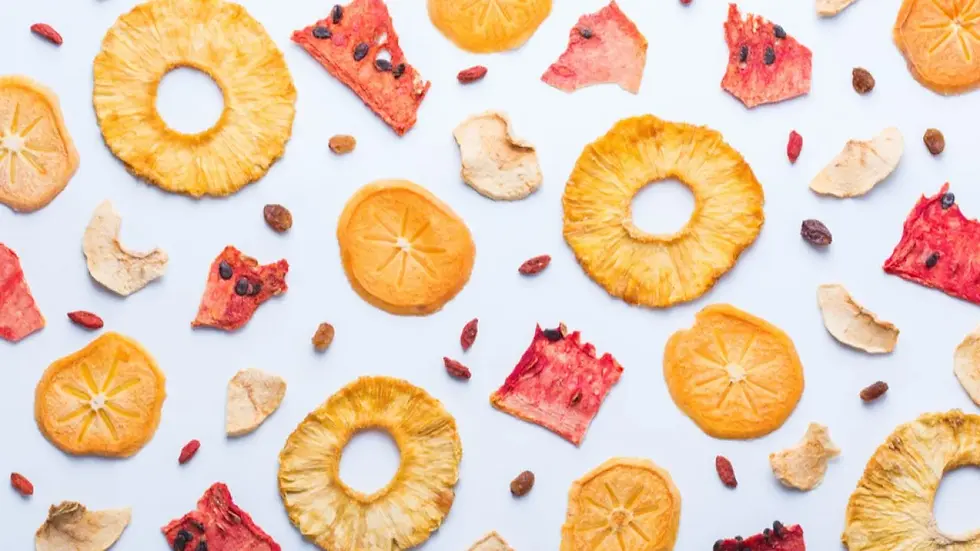
Economic Benefits
One of the most attractive benefits of food drying is the economic savings it offers. When you dry food, you can purchase seasonal produce at lower prices, ensuring you get the best deals. Additionally, dried items are compact and lightweight, leading to savings in storage and transportation costs.
Resource Management
Food drying advantages also extend to resource management. Reducing waste means using fewer resources overall. In a world where sustainability is increasingly important, drying food empowers individuals to make environmentally conscious choices.
Minimizes food waste
Saves on grocery bills
Reduces carbon footprint
Enhances dietary diversity
Food Item | Fresh Weight | Dried Weight |
Apples | 100g | 20g |
Tomatoes | 100g | 15g |
Carrots | 100g | 10g |
Healthy Snacking
Dried foods offer a healthy, nutrient-dense snacking option that is often more flavorful compared to their fresh counterparts. Without additives and preservatives, dried snacks can be made at home, allowing for complete control over what you consume.
100% natural ingredients
No added sugars
Convenient for on-the-go snacking
"Food drying advantages are not just about preservation; they are a pathway to a more sustainable and economical lifestyle."
Preserving Flavors: Food Drying Insight
Food drying is not just a preservation method; it boasts numerous food drying advantages that enhance flavors while extending shelf life. This age-old technique reduces moisture, effectively inhibiting spoilage and providing a concentrated taste that some describe as nature’s candy. Choosing to dry fruits, vegetables, or meats can transform your meals, delivering nutrition without unnecessary additives.
Health Benefits of Food Drying
Among the significant food drying advantages is the retention of essential nutrients. Unlike canning, which can leach vitamins, drying preserves the nutritional integrity. Additionally, dried foods often contain fewer added preservatives, making them a wholesome option for health-conscious consumers.
Convenience and Versatility
Food drying creates versatile ingredients that can be easily incorporated into various dishes. The convenience of having dried fruits and vegetables at hand means you can whip up snacks or meals quickly. From soups to salads, the possibilities are endless.
Lightweight and portable
Long shelf-life
Enhanced flavors
Minimal storage space required
These aspects make food drying an appealing option for busy individuals and families alike.
Type of Food | Drying Time | Storage Tips |
Fruits | 6-12 hours | Airtight containers |
Vegetables | 4-10 hours | Cool, dark place |
Meats | 8-12 hours | Vacuum sealed bags |
Dried Food Recipes to Try
Want to explore the food drying advantages further? Consider trying out simple recipes with your dehydrated ingredients!
Dried fruit snacks
Vegetable chips
Beef jerky
“Dried foods are not only nutritious but they also pack a flavor punch, proving that preservation can enhance culinary experiences.”
This is just one of many great blogs we have—explore more right here.
Food Drying for Healthy Snacking Options
Food drying offers numerous advantages, providing an excellent method for preserving fruits, vegetables, and meats while enhancing their flavors and nutritional value. By removing moisture, dried foods have a longer shelf life, making them an ideal choice for healthy snacking. This simple yet effective preservation method is natural, and it helps maintain essential nutrients often lost during traditional cooking processes. Furthermore, dried snacks can be conveniently stored and transported, making them perfect for on-the-go munching.
Benefits of Food Drying
One of the most significant food drying advantages is its ability to concentrate flavors. Dried fruits, for instance, become naturally sweeter and more robust in taste. Additionally, this method allows you to enjoy seasonal produce year-round. By dehydrating food at home, you can also control the ingredients, preventing unwanted additives or preservatives. Moreover, food drying can save money since buying in bulk and preserving it can reduce waste and extend the life of your groceries.
Techniques for Effective Drying
There are several methods for drying food effectively, each offering unique benefits. Some common techniques include the following:
Air drying
Oven drying
Dehydrator drying
Method | Advantages |
Air Drying | Simple and cost-effective |
Oven Drying | Faster, but requires constant monitoring |
Dehydrator Drying | Best for retaining nutrients and flavors |
Choosing the Right Fruits
When selecting fruits for drying, consider those that lend themselves well to the process. Some favorites include:
Apples
Mangoes
Bananas
Peaches
"Food drying opens the door to a world of flavorful, healthy snacking options that you can prepare right at home!"
The Eco-Friendly Choice: Food Preservation
Food drying is an ancient practice that offers numerous food drying advantages, making it a sustainable choice for preserving food. By removing moisture, dried foods can last significantly longer than their fresh counterparts, reducing food waste and saving money. This eco-friendly method requires minimal energy and eliminates the need for preservatives, offering a healthier alternative for your pantry. With its many benefits, food drying not only enhances flavor but also helps lower your carbon footprint.
Health Benefits of Dried Foods
Dried fruits and vegetables retain essential nutrients and antioxidants that are often lost in other preservation methods. When you choose to dry your foods, you’re not only enjoying concentrated flavors but are also benefiting from enhanced vitamins and minerals. This method allows you to control the ingredients, avoiding excess sugars and additives found in many packaged snacks.
Cost-Effective Storage Solutions
Investing in food drying equipment can pay off significantly. The initial cost may seem daunting, but the long-term savings from reduced grocery bills and less food spoilage are substantial.
Extended shelf life
Reduced food waste
Healthy and natural
Cost-effective
Consider investing in a dehydrator to explore the myriad options available for preserving your favorite foods. The following table illustrates the approximate shelf life of commonly dried foods.
Food Type | Approximate Shelf Life |
Dried Fruits | 1 year |
Dried Vegetables | 1-2 years |
Dried Herbs | 1-3 years |
Easy Drying Techniques
Many techniques exist for drying foods, from using a dehydrator to air drying or even using an oven. Each method has its own set of benefits, allowing you to choose the best fit for your kitchen and lifestyle.
Dehydrator method
Oven drying
Air drying
Food Drying FAQ: Your Common Questions Answered
Many individuals are curious about the food drying advantages. This ancient preservation method not only enhances shelf life but also retains essential nutrients in various foods. Dried fruits, vegetables, and meats can provide hearty snacks or meal components that are both delicious and nutritious. This guide answers some of the most common questions regarding food drying techniques and their benefits.
Why Should I Consider Food Drying?
Food drying has multiple benefits that have made it a popular choice among health enthusiasts. It helps maintain the food’s natural flavors and colors while removing moisture that can lead to spoilage. Choosing to dry your food means that you are investing in a sustainable option that reduces food waste, saving both money and resources in the long run.
What Foods Can I Dry?
An extensive array of foods can be successfully dried, from fruits and vegetables to proteins. Some of the most enjoyable dehydrated foods include apples, tomatoes, bananas, and herbs. Each has its unique flavors and can add a special touch to meals.
Fruits (e.g., apricots, figs)
Vegetables (e.g., carrots, bell peppers)
Meats (e.g., jerky)
Food Item | Drying Time | Benefits |
Apples | 6-8 hours | Rich in fiber and vitamins |
Tomatoes | 10-12 hours | Great source of lycopene |
Are There Any Health Benefits?
Indeed, incorporating dried foods into your diet can lead to numerous health benefits. They are often more nutrient-dense compared to their fresh counterparts, providing essential vitamins and minerals without excess sugars or preservatives.
Higher nutrient retention
Lower risk of spoilage
Convenience for on-the-go consumption
"Food drying is a time-honored method that brings nourishment and sustainability together."

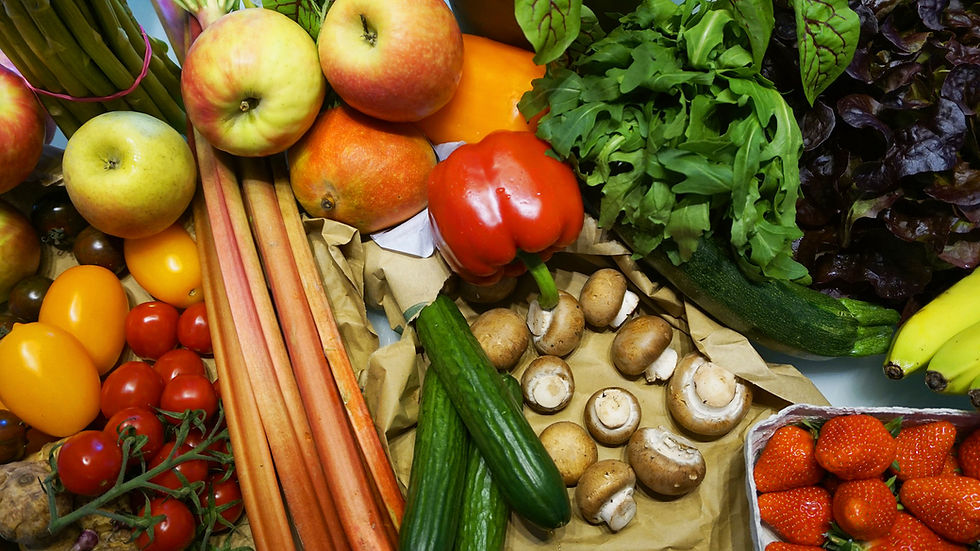


Comments